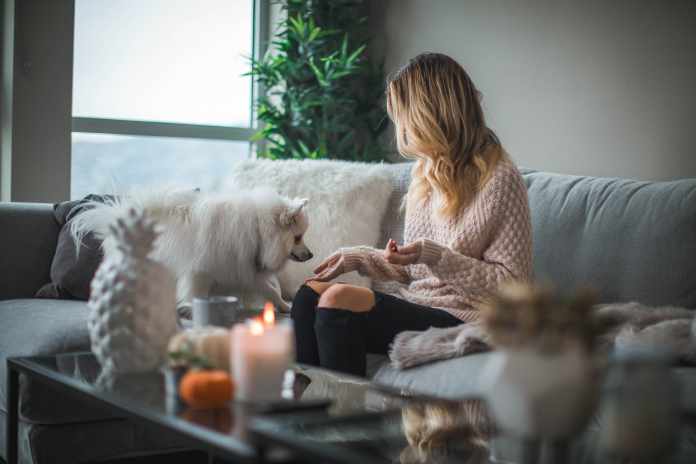In this day and age, where mental health and self-care are increasingly promoted, designers started a new trend for high-end homes: wellness rooms.
Contrary to a gym, which encourages boosting your body’s strength, a wellness room encourages you to loosen up and relax. Typically furnished with nothing but a daybed and a yoga mat, wellness rooms invite you to let go of daily life’s pressures and just be immersed in nature.
Some wellness rooms are outdoors, in a grotto with a rock garden, and maybe a water feature. But if you live in a bustling city with little in the way of nature, you need a quiet wellness room indoors.
According to designer Chad James, a space that is distant from your daily routine creates a sense of retreat. Meanwhile, for designer Maryline Damour, the incorporation of nature in a space is key to encouraging a detachment from a technology-driven world.
That said, if you have a spare room at home with barely any function, it definitely calls for a wellness room. Below is a simple guide to creating your perfect healing space:
Keep The Furnishing Minimal
Since a wellness room is supposed to detach you from technology, the space only needs minimal furnishing. Depending on your desired wellness activity, you can settle for just a daybed and a yoga mat, meditation cushion and accessories, or a sauna room. To add more character to the space, you can install shelving and style it with meaningful ornaments.
Natural and organic textures are hallmarks of a wellness rooms. Adorn the space with indoor plants, flowers, and other natural decorations. Paint renderings of plants, trees, and landscapes are good picks, too.
Designer Rachel Cannon pushes the concept of a “quiet room,”where electronics are off-limits. She also prefers the space to be devoid of other people, meaning you alone is allowed inside the room. Such a space lets you spend quality time with no one but your thoughts and a few cherished objects, like books and heirlooms.
For the practical details of the room, such as the flooring, the material should depend on what your wellness room is for. If you’re making it a sauna room, for example, then it needs a flooring material specifically designed for that purpose. But if you’re going to use the space for meditation or yoga, you may choose a flooring material the same as your bedroom. After all, bedroom floors are usually cozier than the rest of the home.
Carpet floors are a good choice if you do yoga every day. The softness of the material will make your poses more comfortable. A carpet also controls the room temperature and dampens sound. Suffice to say, it’s ideal for a quiet, tranquil space.
Wood flooring, on the other hand, incorporates nature best. If you love the look of wood but need more comfort for your movements, lay down a thick and soft area rug.
Wellness Must-Haves
If you want a multi-function wellness room, consider these self-care must-haves that will elevate your wellness routine:
- Foam Rollers
Though yoga and stretching exercises can alleviate back pain, sometimes, you need a more intense solution. Try using foam rollers to deal with your persistent back pain. It will also relieve your muscle tightness, soreness, and inflammation, and increase your joints’ range of motion.
Foam rollers are best used before or after working out, in your warm-up or cool-down routine. It’s also effective in reducing the appearance of your cellulite, although just temporarily.
- Massage Balls
Like foam rollers, massage balls also ease your muscle pains, but they can target specific body parts. You can use it as a Pilates equipment and feel some knots in your muscles come loose. It’s also a good tool for soothing the aches in any part of your body after exercising, from your neck down to the soles of your feet. Just lay the ball on a flat surface, press an aching body part against it, and move to make the ball roll.
- Essential Oils
No wellness room is complete without essential oils. If you’re sensitive to smells, just drop a tinier amount of essential oil in your diffuser, and it won’t spread a strong scent.
Different essential oils have different benefits, from reducing stress to boosting productivity. In a wellness room, it’s best to opt for calming blends. Consider a mix ofvetiver, neroli, clary sage, and geranium if you’re feeling anxious. To help you sleep better, go for a mix of lavender, chamomile, and rose. And to improve your focus, blend peppermint and rosemary.
Thanks to the growing awareness about mental health, we can now treat ourselves with the ultimate pampering experience without feeling like we’re throwing away our money. Self-care is truly an investment, and we don’t even need to leave the house anymore to indulge in it.


















